The Ace Hotel review: A cool sanctuary of calm in Kyoto
Built on an ethos of fusing East with West, The Ace Hotel blends the contemporary with tradition that creates an innovative space in the heart of Kyoto.
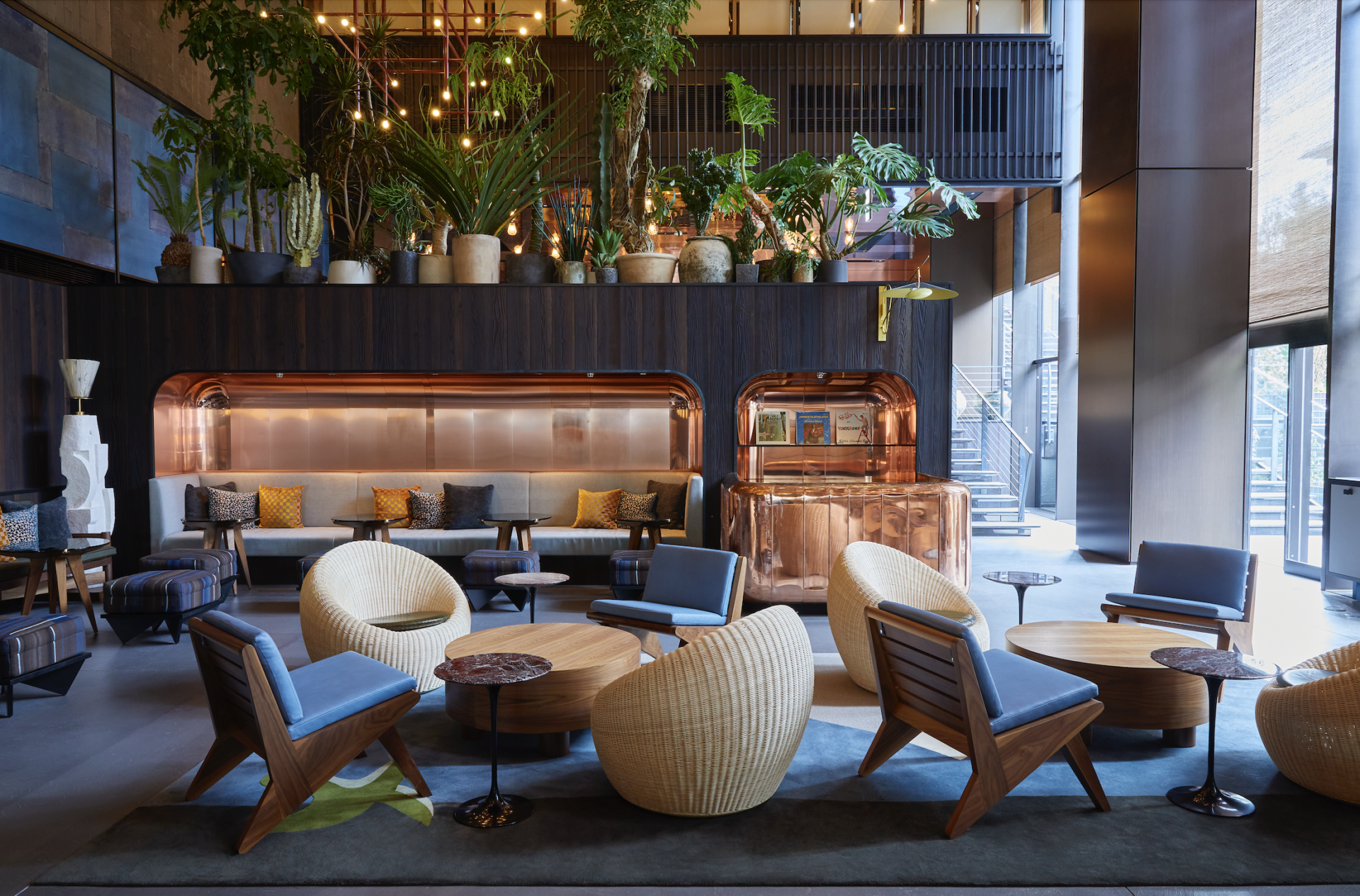
It’s confession time, as much as I am huge advocate for solo-travelling, I’ve always had a problem with pacing, which extends to my everyday life. I have to run on a treadmill, rather than in the park and my everyday speed of speech is as fast as Shoshanna Shapiro from Girls.
When holidaying alone, I want to maximise my time, but it’s easy to overdo it. With no one to stop for a coffee or detour with, I devour tourist attractions at a rapid pace. This often leaves me burnt out, which almost happened on my trip to Japan. After a fallen tree on the train track and a detour to Lake Kawaguchi from Tokyo, all before heading on to west Japan, I eventually made it to Kyoto in need of some respite. There, I found my urban sanctuary – the Ace Hotel Kyoto.
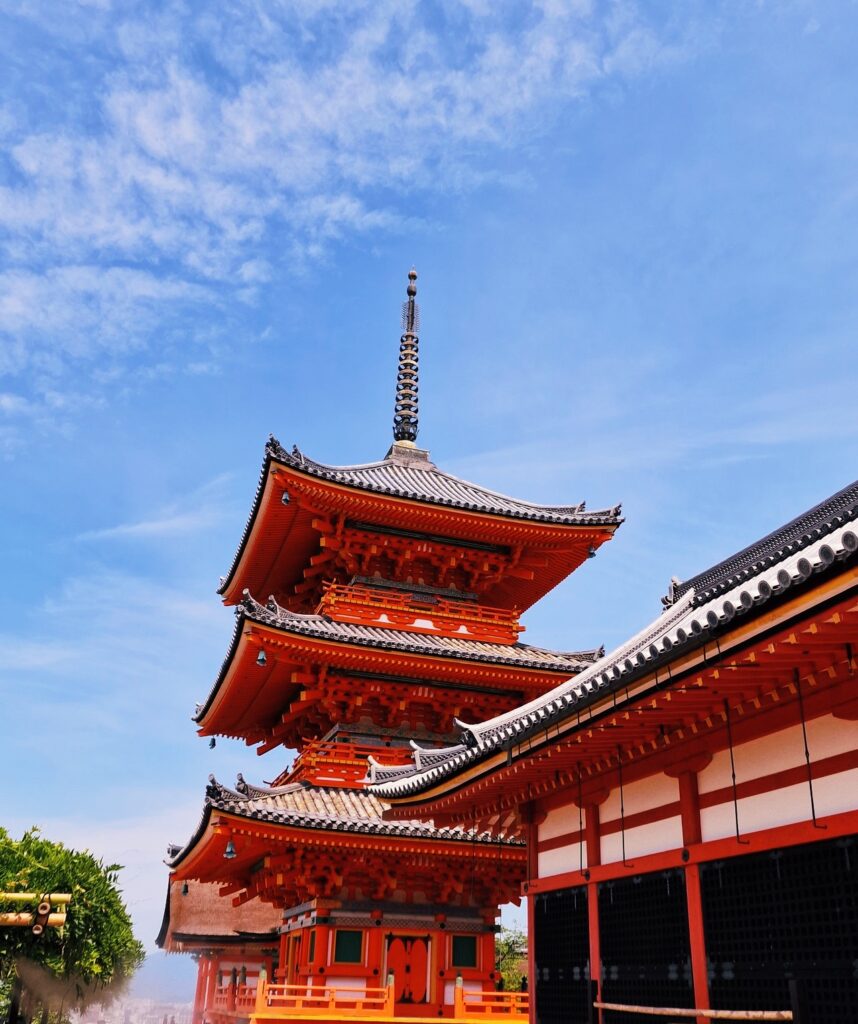
Kyoto often pips the bustling mega-metropolis of Tokyo as tourists’ favourite city when visiting Japan. The nation’s old capital offers a more relaxed vibe and stronger connection to nature than the city of neon lights. Kyoto has a great balance of urban-bustle and picturesque places to visit, including hundreds of shrines and infamous bamboo forests.
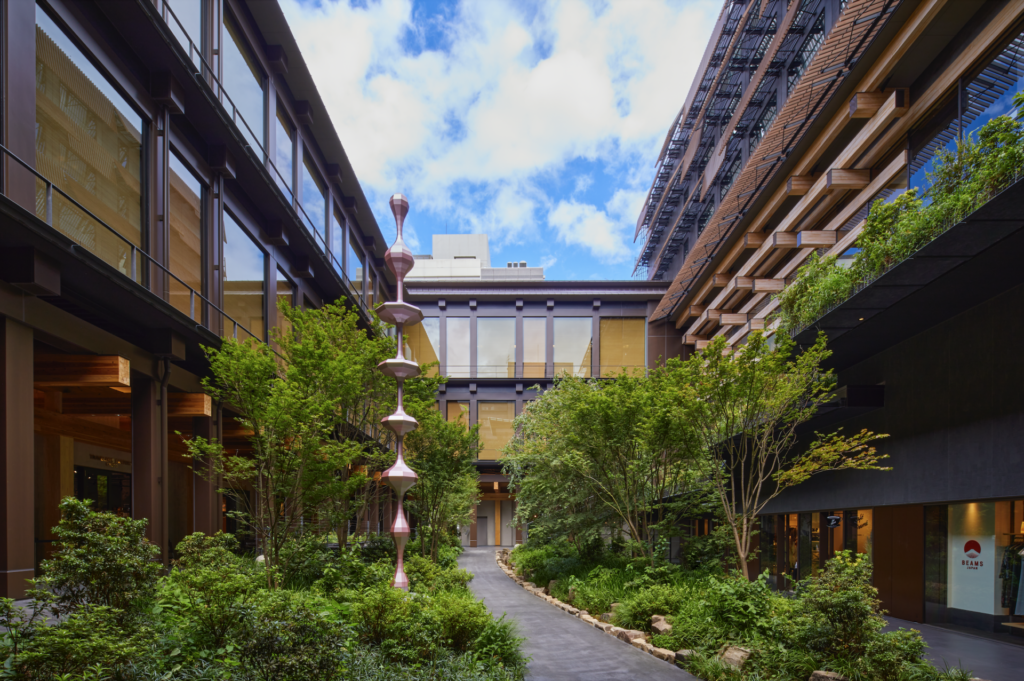
The Ace Hotel Kyoto really fits into the ethos of the city. It’s the perfect blend of modern creativity and tradition. The hotel itself is in Shin-pu-kan, an eco-shopping complex, with bouji fashion shops, bars and restaurants. It was renovated from the old Kyoto Central Telephone Office. Originally built in the 1920s, it was designed by one of Japan’s greatest modern architects: Tetsuro Yoshida. Inside the hotel, the clever equilibrium of old and new continues.
The lobby and reception space is cleverly designed to draw your eye to all the layers of the hotel. The elements of the lofty space span the globe with Japanese wood panels. The reception area and boutique shop wouldn’t be out of place in California. Go on further and you’re met with copper and red brickwork and a coffeeshop reminiscent of New York City.
“The nation’s old capital offers a more relaxed vibe and stronger connection to nature than the city of neon lights”
Art is a big part of the hotel. One stand-out is the huge technicolour patchwork textile piece draping around a jutting corner wall of lobby space. This was created by Kagoshima-based Shobu Gakuen’s artist community. Below a tubular copper light installation sits a gallery space, during my visit they were showcasing Tokyo-based artist Shinya Ogiwara’s In My Feelings, which looks at the beauty of the everyday. With hanging skateboards on wooden screen panels, included in the exhibition, it’s easy to see the likes of Evan Mock, or cult skater brands such as Palace or Supreme rocking up to do an event here. But the hotel doesn’t need me to tell them that, they’re already well underway in terms of getting the party started.
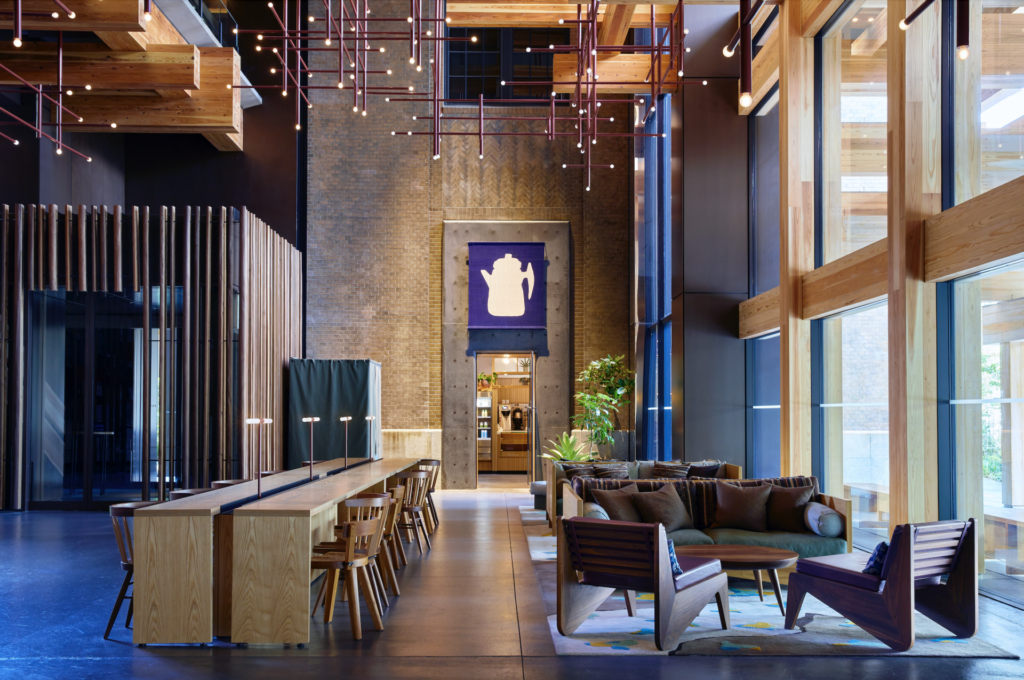
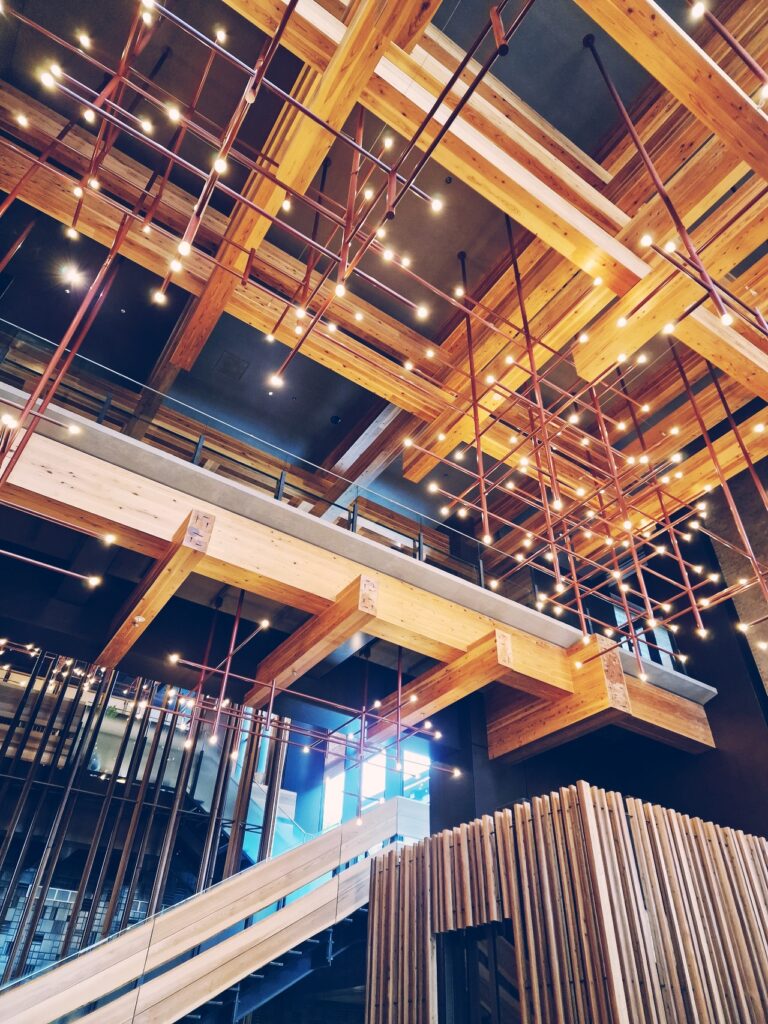
This hotel chain is undoubtedly the connoisseur of cool. They’ve already played host to plenty of international DJs for parties, put on vinyl record market days, as well as innovative events for patrons and locals to get involved with. Last month, Newtrad, a pro double dutch jump-rope team performed in the lobby, proved versatile space encourages innovation and creativity. This all pushes the Ace Hotel Kyoto beyond being a luxury hotel.
It’s easy to see why locals hang out there. It’s the perfect place to sit catching up with work friends. The Stumpton Coffee Roasters café on site is ideal for a cup of Joe. Like every corner of the hotel, the coffee shop has been meticulously designed, reminiscent of the work of Czech-American architect Antonin Raymond with oak tambour walls and artisanal glazed tiles from Shigaraki and work from Californian artist Adam Hogue hanging in the windows.
“The creative heart of the hotel flows out to other levels of the property”
The creative heart of the hotel flows out to the other levels of the property too, especially in its food and drink spaces. The main restaurant area has multi-level glass that floods the space with natural light and greenery and the mezzanine bar and lounge area continues the copper tones. Michelin-ranked chef Wes Avilo (from LA’s Guerilla Tacos) brings Californian Mexican fusion to Japan via the Ace’s Piopiko restaurant.
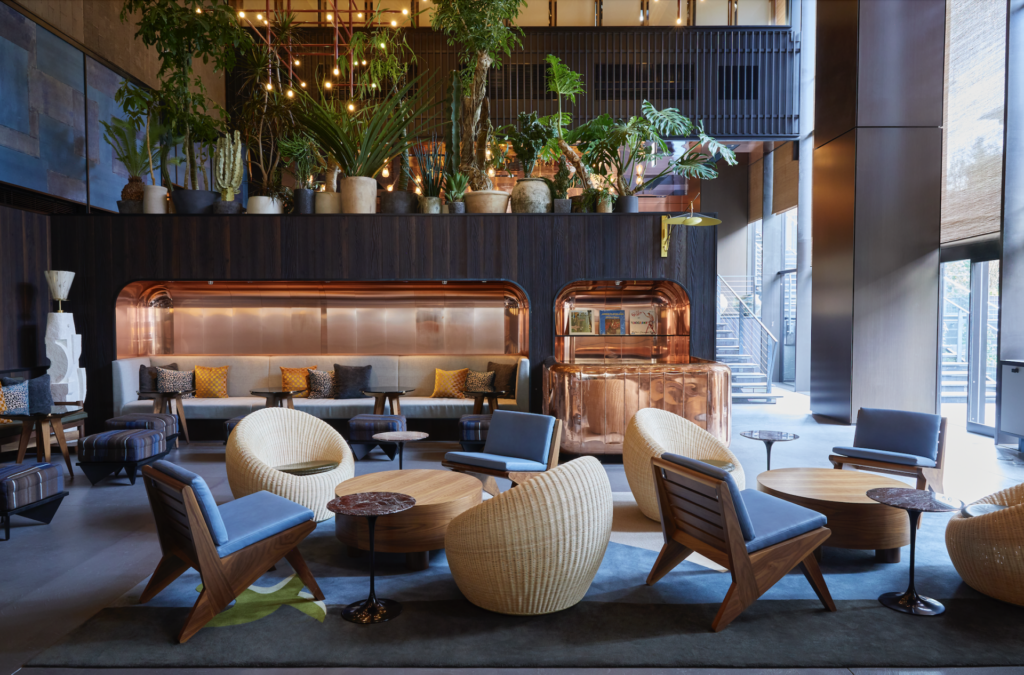
On the third floor sits Mr. Maurice’s Italian, with sumptuous Italian classics aplenty. I sampled a hearty carbonara and, of course, their delicious tiramisu before heading out to the rooftop cocktail bar overlooking the bustling Shinpuken courtyard below – the perfect place to end an evening.
The hotel recently opened restaurant Kōsa Kyoto, which sources food directly from small farmers for a menu highlighting the region’s sublime ingredients. Once again, the hotel goes stateside, with a Californian menu dictated by the day’s harvest and is headed up by Locale Tokyo’s chef Katy Cole. The premise? The feeling of dropping by a friend’s place (well, one who cooks incredible food).
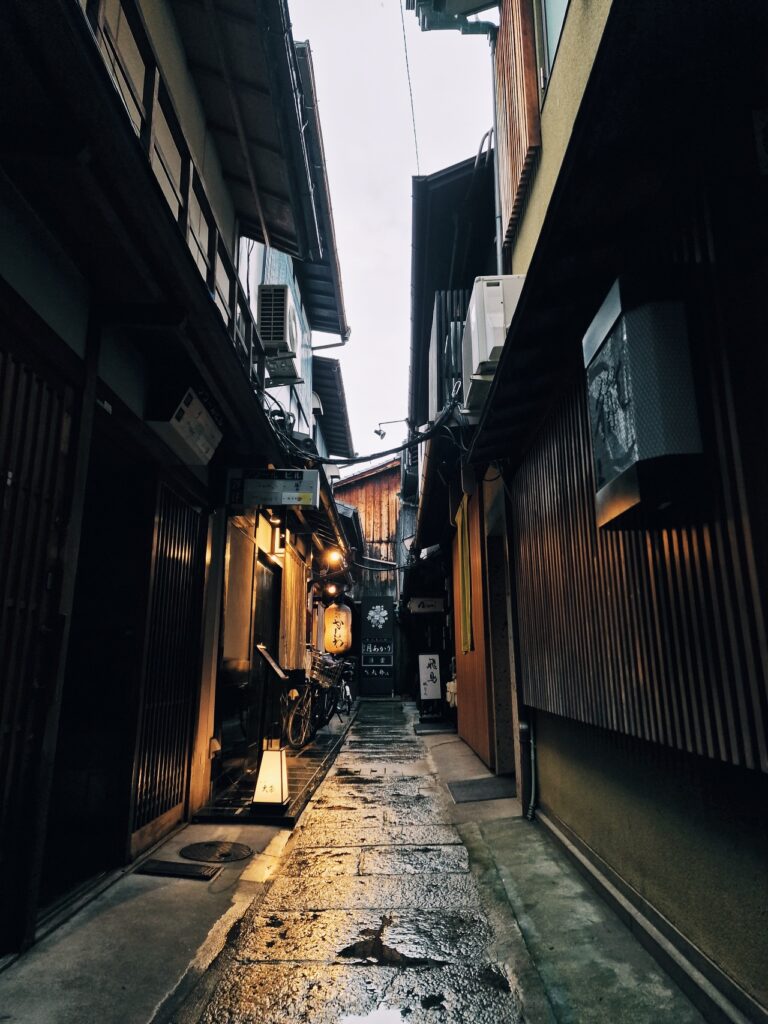
Speaking of feeling at home, the guest rooms offer cosy respite in an elevated, cinematic way reminiscent of an Architectural Digest video (think Dakota Johson’s exquisite retro home with lush greenery and wood galore). There’s the continued fusing of compass points with Japanese aesthetic, mixed with mid-century Californian décor, with pops of mustard yellows and petrol blues. The beds have the Ace Hotel signature bolsters in leather and denim. The rest of the furniture is influenced by French architect Charlotte Perriand from when she lived in Japan.
On the more tactile side, the drapery and furnishings were equally sumptuous. Developed in collaboration with Akira Minagawa and his textile company Mina Perhonen, exclusively for the Ace. It’s just another example of how the hotel gets its interiors so spot on. This unsurprisingly extends to artwork that has been carefully curated in the room, with pieces made by Samiro Yunoki, part of Japan’s original Mingei group of folk artists. When I needed time-out from all the touristing I was doing, this room was a great sanctuary to really relax in, which is handy as the location of the hotel is also perfect for wandering around the city.
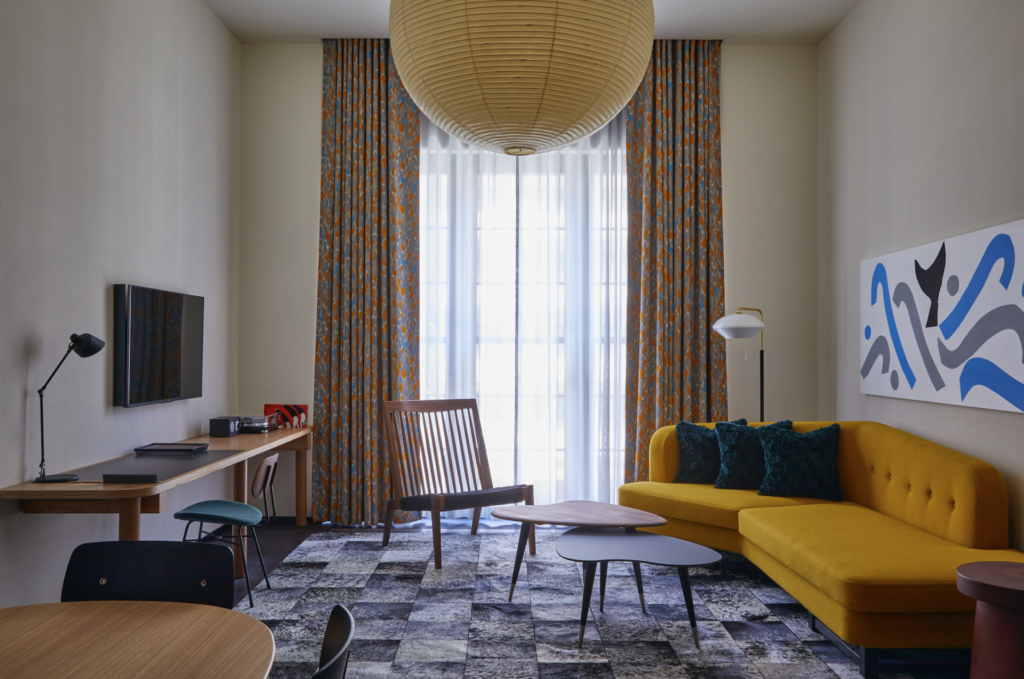
There are plenty of Kyoto’s landmarks nearby the hotel. This included the infamous Nishiki food market, a bustling covered lane full of food, drink and gifts, just a 10-minute walk away. Various museums sit within walking distance too. I popped into Kyoto’s International Manga Museum, a two-minute walk away to read some Naruto and pour over the vast library of manga housed there. It was the perfect opportunity to read about the history and process of the art-form.
“I loved exploring the downtown area of Kyoto, including the nightlife”
I loved exploring the downtown area of Kyoto, including the nightlife. One highlight was Macho Bar, which does exactly what it says on the tin. A cute, camp bar, complete with muscly men squeezing lemons into your drink with their biceps, dancing along to Village People and Magic Mike-style ripping-off of uniforms on request. The fact that you can stumble out of the bar, and find yourself immediately immersed in the low colourfully lit winding streets before arriving at the Gian Geisha district really shows the beauty and balance of the city from modernity to the historical.
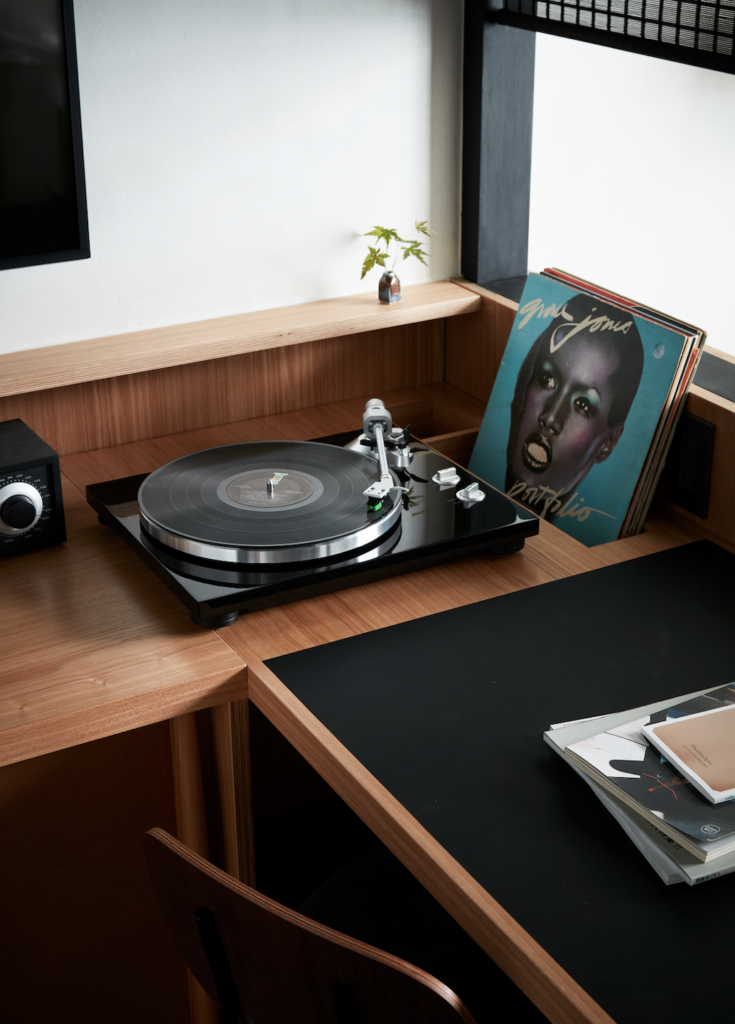
Conveniently in the same building, there’s plenty of retail therapy to be had too. The lobby of the hotel leads through to the courtyard and retail spaces of Shin-pu-kan. Once again, it’s not just your everyday shopping. Beams Japan Tokyo, Maison Kitsuné are housed there, as well as La Labo (who the Ace Kyoto have ready for you to lather in your hotel room bathroom.)
I couldn’t resist popping into Tea and Sake Tasuki ShinPuhkan. They offer giant sculptural shaved ice desserts in incredible flavours. I went for Tiramisu (a running theme of my stay at the Ace) and dark cherry flavours. The shaved ices are presented in huge Fabergé egg-like art sculptures that are incredibly refreshing and delicious (once I had finished marvelling at the dessert that was almost as big as my head.) There is also Kamesuehiro, a traditional sweet shop established in 1804, just opposite the hotel. The popular no frills, but delicious Men-ya-Yukou ramen restaurant also lies close by.
Wherever I visited, it was always nice to return back to the cocoon of the Ace Hotel Kyoto, with its warm, copper light and Cali-Japanese vibe, lush greenery and light flooding through the giant glass panes of the hotel. If I’m honest, I struggled to monitor my pace whilst in Kyoto. There was just too much to explore. The Ace made me take a breath and slow down, which is exactly what you need from a hotel.
You can make a reservation at the Ace Hotel Kyoto here.
